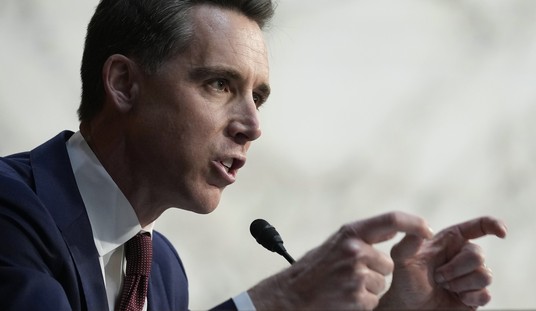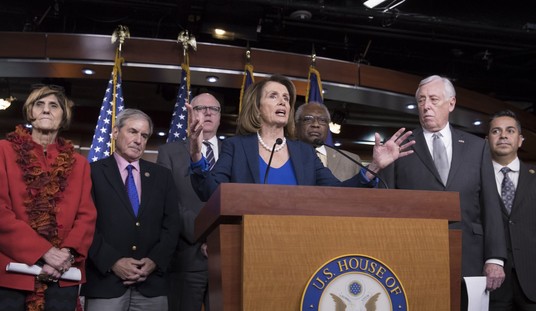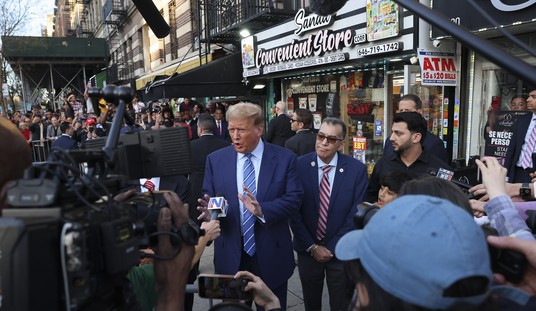One of the first moves of the Obama administration was a $787 billion government stimulus in early 2009 to prop up an ailing economy. Many conservatives these days are focused on reining in government spending -- and this undoubtedly will be a talking point in the days to come as GOP candidates and the president hunker down for Election Day 2012.
Was the stimulus just one more Washington boondoggle -- a handout to special interests that wasted taxpayer money when we already are up to our eyeballs in debt? Or was it a crucial intervention in a time of great need that helped prevent a recession from turning into a depression or worse?
The nonpartisan Congressional Budget Office has just come out with its report on the American Reinvestment and Recovery Act (referred to in the document as ARRA in typical beltway affection for acronyms and jargon). And its findings on the real impact of the stimulus package are worth noting:
Real Deficit Impact Is 5% Higher: The CBO estimates the total deficit impact of the spending actually will be $825 billion. That’s a roughly 5% increase over that headline $787 billion price tag initially reported.
The Money Already Is Spent: But more importantly, “close to half of that (deficit) impact occurred in fiscal year 2010, and about 85 percent of ARRA’s budgetary impact was realized by the end of June 2011.” In short, lest politicians tell you otherwise, the horse has left the barn.
Related Article: Who's who on Obama's $37 million White House payroll
Number of Jobs “Created” Is Slippery: The CBO gives the GOP fodder for criticism of the stimulus, admitting some jobs “might have existed even without the stimulus package, with employees working on the same activities or other activities.” Then again, the office also gives Obama wiggle room by saying jobs estimates “do not attempt to measure the number of jobs that were created or retained indirectly as a result of recipients’ increased income, and the increased income of their employees.” That means pinning down a hard figure for jobs created on this is less about facts and more about finding the right statistics to make your argument.
Recommended
Cost Per Job Between $196,750 and $562,000: Like I said, the jobs numbers are slippery. But if you take the $787 billion price tag and divide by CBO estimates of 1.4 million to 4 million “full-time equivalent” jobs created as a result of the stimulus measure, per-job costs range between these two six-figure sums.
Stimulus Had Substantive GDP Impact: Perhaps the rosiest news is that the impact of the stimulus package “raised real (inflation-adjusted) gross domestic product (GDP) by between 0.8% and 2.5%.” That’s no mean feat for a nearly $15 trillion economy. Then again, the fact is the U.S. is slogging it out. Unfortunately, a report last week indicated the U.S. economy currently is growing at a 1% annualized rate, so we are far from in the middle of an economic recovery, let alone an economic boom. Still, it makes you wonder how bad things would have been without that crutch over the past two years. Also makes you wonder if we still are in a recession even if we haven’t met the textbook definition of declining GDP for two consecutive quarters.
Tax Cuts for the Rich, Homebuyer Credit and Corporate Tax Breaks Were a Waste: The CBO did some complex calculations on the “multiplier effect” of the money spent. That is, if a city gets a $1 stimulus grant but spends $2.50 on a project like a new bridge, the multiplier is 2.5. If, on the other hand, a citizen gets a $1 tax credit and only spends 80 cents, the multiplier is 0.8.
Estimates in the report show that direct purchasing of goods and services by the federal government -- or similar efforts undertaken by local governments thanks to federal funding -- had a multiplier of 1.0 to 2.5 on every dollar spent -- showing a big return on Uncle Sam’s investment. The tax cuts for the wealthiest 1% of Americans? A measly 0.2 to 0.6 multiplier. Similarly, the multiplier for the $8,000 tax credit for first-time homebuyers was a paltry 0.3 to 0.8 multiplier. Worst of all, the multiplier on corporate tax provisions was as little as zero and only as high as 0.4. This is not to say that there was no impact from these efforts (unless you believe that low-ball zero multiplier for corporate tax cuts). But in the context of the other figures, the economy would have seen more bang for Uncle Sam’s bucks if the cash was spent via direct investment. Sorry, supply-side supporters …
Short-Sighted and Irrational Americans Will Provide the Biggest Impact: In its methodology, the CBO reveals why it is likely these tax credits to well-off Americans had less of an impact (at least by its calculations). In explaining how it reached some of these numbers, the CBO says other economic models that offer a smaller per-dollar impact of stimulus funds “are generally predicated on the assumption that people are fully rational and forward-looking, basing their current decisions on a full lifetime plan.” Under such a model there are “more modest” impacts on the real economy because “people are assumed to make decisions about how much to work, buy, and save on the basis of current and expected future values of the wage rate, interest rates, taxes, and government purchases, among other things.”
Related Article: Could a GOP president fix the economy?
In short, rational-thinking citizens and businesses who are worried about the future can’t be incited to run out and spend willy nilly, even if the government gives them a handout.
Is it more disappointing that the federal government will depend on such behavior to spur economic growth, or more disappointing that most Americans and American businesses might not actually know any better?
I’ll leave it up to you to decide.
Jeff Reeves is editor of InvestorPlace.com. As of this writing, he did not own a position in any of the stocks named here. Follow him on Twitter via @JeffReevesIP and become a fan of InvestorPlace on Facebook.
John Ransom | Create Your Badge

See more top stories from Townhall Finance. New Homepage, more content. Be the best informed fiscal conservative:
| John Ransom | The Progressive Jobs Plan: Let's Start a Tea Party |
| Bob Beauprez | Cantor Goes on Offense for Jobs |
| Stewart Scott | Why Al Qaeda is Unlikely to Execute Another 9/11 |
| Mike Shedlock | Central Falls Files Bankruptcy Plan; Union Files Suit Against Chris Christie |
| Bill Tatro | The Obama Manufacturing Fairy Tale |
| Jack Bouroudjian | SEC: The Fox Is Guarding the Henhouse |
| Jeff Reeves | CBO: Cost Per Job Between $196,750 and $562,000 |
| Email Ransom | thfinance@mail.com |
| http://twitter.com/#!/bamransom |

























Join the conversation as a VIP Member